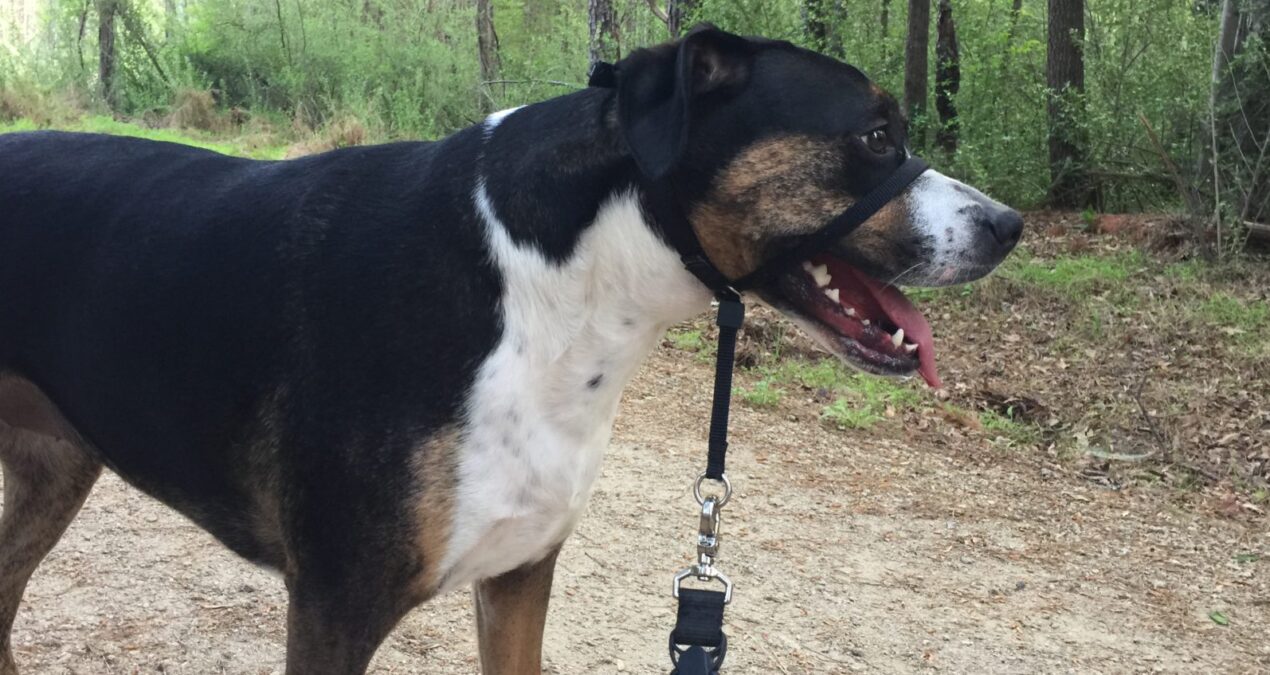Obviously, the first thing we need to talk about is the need to ensure the safety of your running buddy. Laura and I have a couple of things we use to make sure that we don’t lose track of one another. She doesn’t have the impressive, strong nose of my kind – while I would never lose her, she might very well misplace me, and that’s not ok because she’s the one who drives us to our running trails. I can’t reach the pedals of the car, nor do I have a driver’s license.
We prefer to remain connected through a leash and head halter. I like the head halter because I am able to more easily monitor Laura’s movements and intentions this way. Many of my kind resist the head halter, but I find that it allows for a much more connected experience.
My head halter is a pretty basic one: it’s called the PetSafe Gentle Leader Head Collar. I won’t lie – my sister resisted it vigorously. But then again, my sister resists most things vigorously. Once Laura understood how to get the halter on me, we were fine. She struggled with it a bit, getting the size just right. When I was younger, and she first began using it, I did have a tendency to want to run much faster than she did, and so I wound up encouraging her through my actions, and trying to pull her along to make her keep up.
I soon found that this was not the way to go, especially once we got the halter and I was able to better encourage her through it. I stay right beside her now, unless she lets me off the halter and I am able to go out on my own to follow the incredible scents available on our runs. My understanding of the halter on other dogs is that it is beneficial in the teaching of walking or running without pulling too much on the leash. Running companions of the human type find this most unpleasant, and honestly, I found it an annoying habit as well when I did it. However, it came largely from my own youthful exuberance and desire to encourage play in my companions.
The halter fits over my snout, and my mouth is not in any way constricted. I am able to pant, lick, bark, and do whatever else I want whilst wearing it. But like I said, it became obvious that pulling my running companion along with it was counterproductive, and I soon stopped.
The halter has a sturdy loop at the bottom (under my chin, at the base of my throat) and it’s there that I fasten on to the leash that keeps us connected to each other. I will talk about our leash system in a later post, though.
The Halter comes with a video which made Laura’s understanding of the halter’s workings much clearer. She was able to use the video to figure out how to introduce me and the halter to each other. I’m an unusual dog – obviously – so our learning curve with the halter was short.
The video is aimed at the human side of the partnership, and shows how to best train your canine companion in walking or running with you with the benefit of the halter. Head halters are, visually, a little more complex than a collar, which just clips around your dog’s neck. The halter is a bit more complicated, and we had to work on which bits went around my snout and where the small plastic clip was supposed to sit and fasten.
Through our use of the harness, I’ve been able to encourage my running companion to keep up with me quite well. She improves daily.
